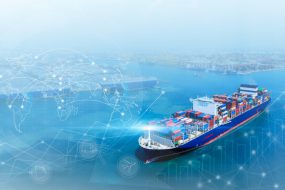Retail logistics isn’t exactly the flashiest part of running a business – but wow, is it essential. If you’re in the world of e-commerce, supply chain management, or anything that involves getting products from A to B (to Z, then back to A again), you already know the drill: customers want things faster, cheaper, and with real-time updates. No pressure, right?
Good retail logistics isn’t just about moving boxes. It’s about building systems that can handle whatever the market throws at you – from unexpected surges in demand to last-minute delivery chaos. Let’s break down how you can implement smarter, more efficient retail logistics services without drowning in jargon or complexity.
Related reading: An inside look at key strategies driving retail logistics efficiency
What even is retail logistics?
Put simply,retail logisticsis the process by which goods are transported from suppliers to customers. It covers warehousing, transportation, inventory management, and distribution – basically, everything behind the scenes that ensures someone’s online shopping spree lands on their doorstep (and not six weeks late in the wrong size either). The goal? Get products to the right place, at the right time, in the right condition, every single time.
The tech that’s totally changing the game
Gone are the days of clipboards and guesswork. Retail logistics has had a serious glow-up, thanks to tech like:
- AI & machine learning: Predict what people are going to buy before they even do. Creepy? A little. Useful? Absolutely.
- IoT (Internet of Things): Track shipments in real-time and avoid the dreaded “Where’s my parcel?” emails.
- Blockchain: Not just for crypto enthusiasts – this technology enhances transparency and security in the supply chain.
If you’re not already using tech to boost your logistics, you’re leaving time (and cash) on the table.
Related reading:Revolutionising fashion supply chains with AI technology
So, how do you make retail logistics… Efficient?
You don’t need to reinvent the wheel, but you do need a plan. Here’s what works:
1. Mix up your transport game
Multimodal transport is a win. Road, rail, air – use whatever combo makes sense. It cuts costs, saves time, and can even help you reduce your carbon footprint. Additionally, if one route encounters an issue, you have a backup.
2. Sort out your warehousing
Think of your warehouse as your logistics HQ. If it’s messy or inefficient, everything else suffers as a result. A good Warehouse Management System (WMS) can automate tedious tasks, streamline inventory, and highlight what’s slowing you down—also – location, location, location. A warehouse located near key transport hubs or customer clusters enables quicker and cheaper deliveries.
3. Let data do the heavy lifting
Data analytics isn’t just for big tech companies. With the right tools, you can:
- Forecast demand (no more overstock panic).
- Optimise delivery routes.
- Spot sales trends.
- Figure out where your bottlenecks are.
It’s like getting a cheat code for more intelligent decision-making. Nice!
Related reading:The logistics edge: Boosting speed and satisfaction in e-commerce
The real-world challenges (and how to tackle them)
Retail logistics isn’t all smooth sailing. Here are a few hurdles that trip businesses up – and how to jump them:
Urban overload
City logistics can be a nightmare. Congested roads, tight delivery windows, and limited warehouse space are all real problems. Solutions? Micro-fulfilment centres. Smarter routing. Even cargo bikes for last-mile deliveries. Get creative.
Sky-high customer expectations
Thanks to the “I want it now” culture (looking at you, next-day delivery), customers expect speed, accuracy, and constant updates. Ensure your system is responsive, your tracking is real-time, and your customer communications are crystal clear.
Complex supply chains
Juggling suppliers, international regulations, and multiple delivery zones? Welcome to the club. Stay sane by using integrated logistics software that keeps all your ducks (and data) in a row.
What’s next? Future trends to keep on your radar
Retail logistics is moving fast. Here’s what’s coming down the track:
Circular economy = Smart, sustainable logistics
The future is green. Businesses are rethinking waste and embracing logistics models that reuse, recycle, and reduce. Not only is it better for the planet, but it’s also better for your bottom line. Win-win.
Autonomous everything
Drones dropping off packages. Self-driving trucks are doing the hard miles. It’s not sci-fi anymore – it’s coming. While you don’t need to become a complete robot right now, it’s worth keeping an eye on this space and being open to testing new technologies.
The e-commerce boom isn’t slowing down
More orders. More returns. More pressure. Retailers need logistics systems that can scale, flex, and handle the unexpected. If your infrastructure feels clunky now, it will only get harder. Start future-proofing, stat.
Key takeaway
Retail logistics might not be glamorous, but it’s mission-critical. Whether you’re scaling your e-commerce store or running a multinational operation, the secret sauce remains the same: innovative technology, solid systems, and a strategy that can keep pace with constant change. Get it right, and you won’t just keep up – you’ll pull ahead.
Curious about how your logistics setup could run more smoothly? We’ve got ideas. Read onhere.




